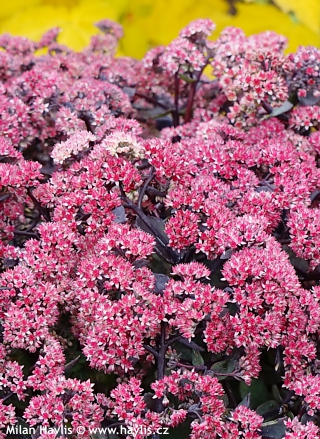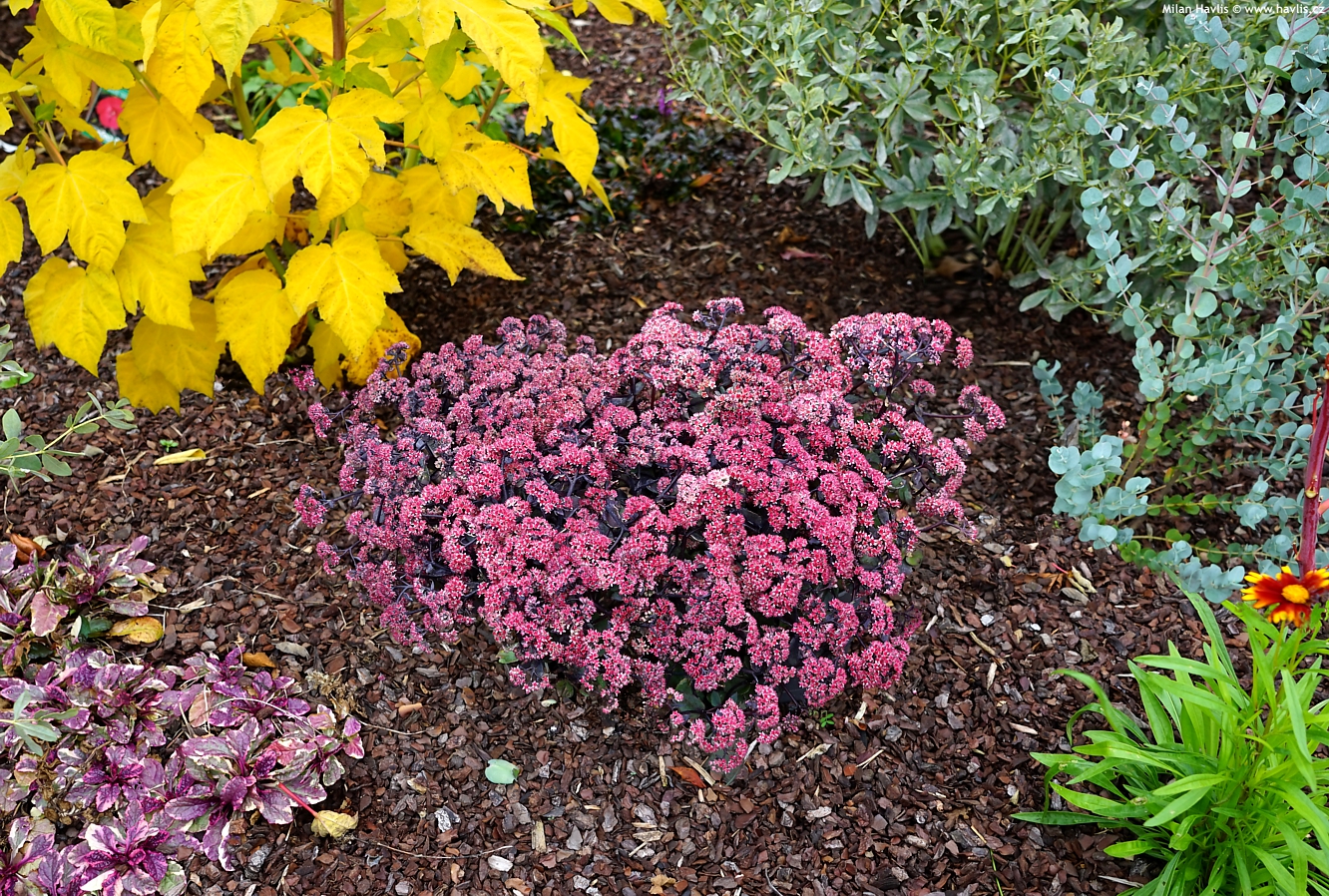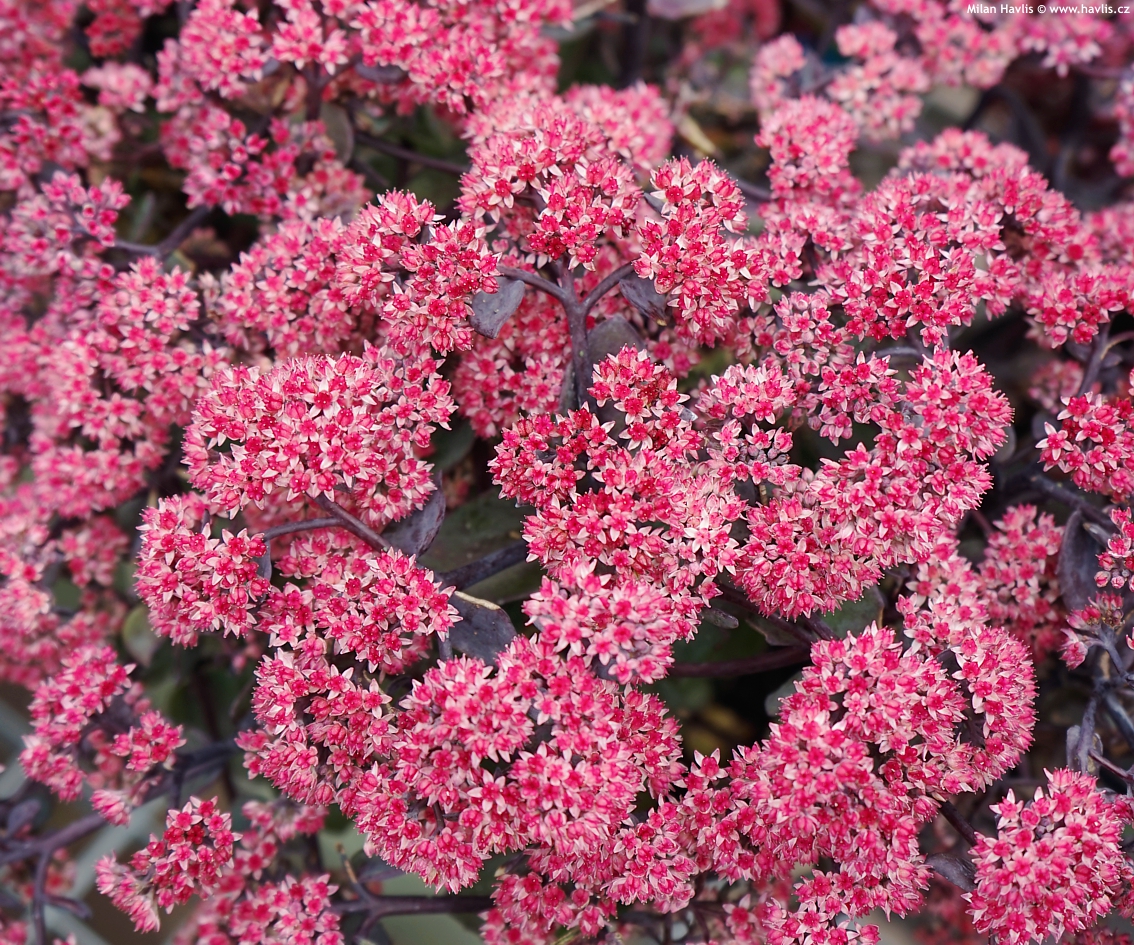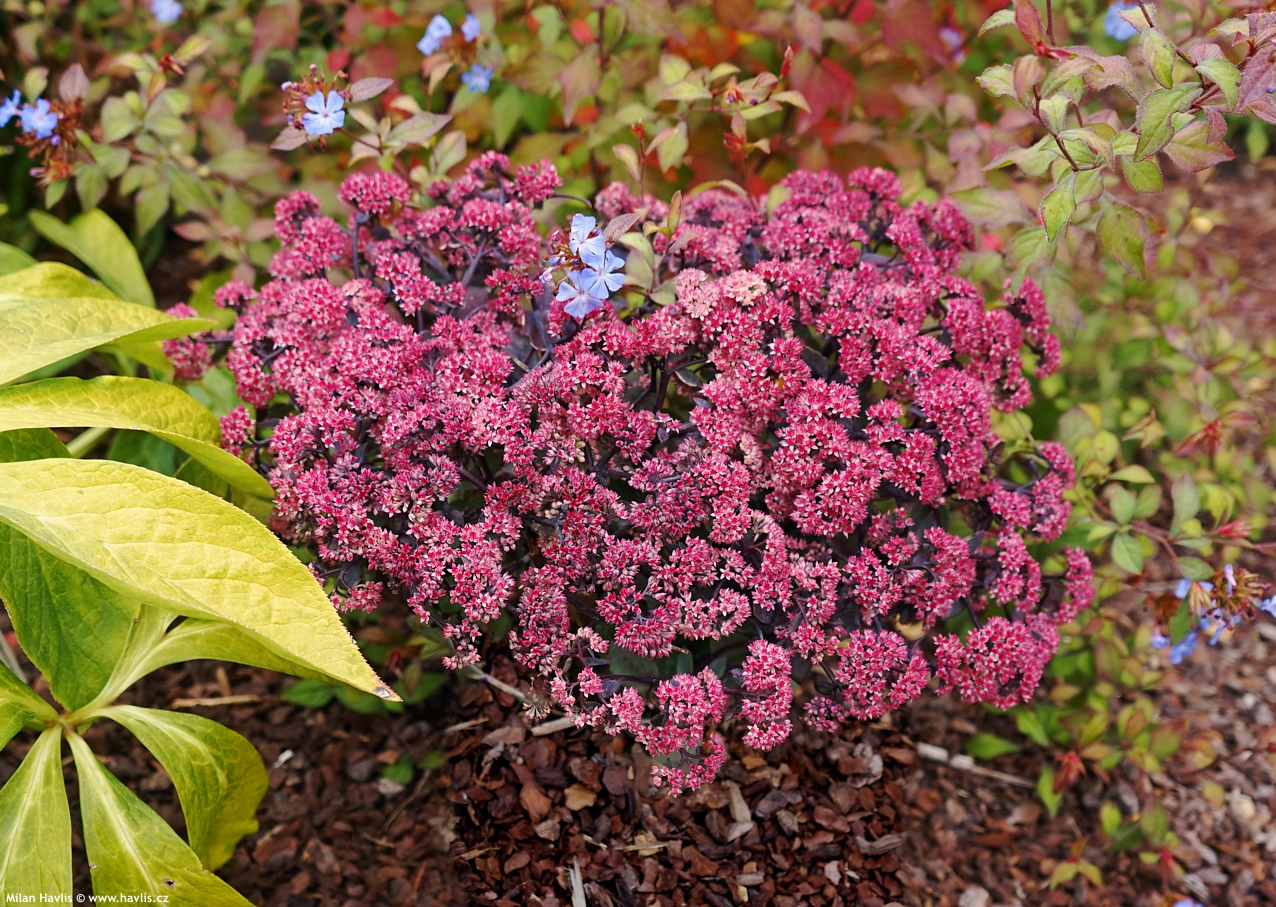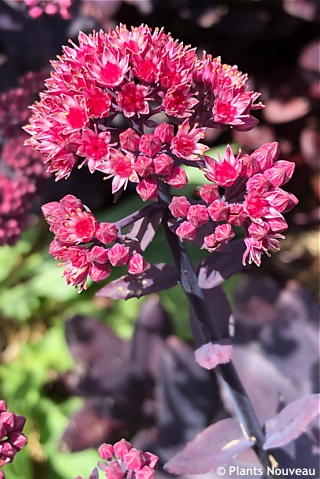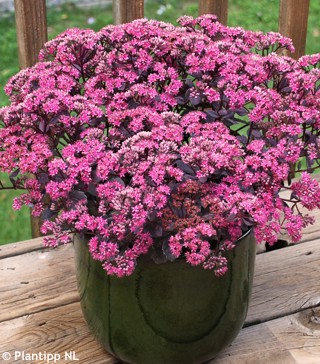Sedum telephium (Hylotelephium) 'Florserodl' SEDUCTION® ROSÉ SOIRÉE stonecrop, iceplant
size/type
low or groundcovering,low perennial
usual height
0,2-0,3m
usual width
0,3-0,4m
leaves
deciduous broadleaf
colour of leaves
flowers
showy
colour of flowers
blooming time
August-October
location
full sun
soil type
any (acidic to alkaline)
soil moisture requirements
dry and sharply drained (xeriscape)
USDA zone (lowest)
4 (down to -34°C)
winter protection
for zone 5+6

for zone 7

categorized
Sedum
Stonecrops (ice plants) are variable and usually very tough perennials popular for their zero requirements for water and maintenance. Most of our C.E. cultivated hardy species and varieties are best grown in xeriscape conditions, and offer a good range of foliage and flower colours. In order to separate the taller ones with stems from the groundcovering species, botanists and growers prefer to use hylotelephium for the taller ones.Description of the plant:
SEDUCTION® ROSÉ SOIRÉE is a stonecrop variety from the Seduction® series bred by the Dutch company Florensis. All plants from the series boast compact growth, dense habit and large inflorescences. ROSÉ SOIRÉE makes deep raspberry red, star-shaped flowers with pale pink sepals. They are borne atop only some 20 cm tall stems from late summer. They are highly melliferous and provide plenty of bee food late in the season. Deciduous leaves are small, oval, deep maroon to deep green with pale maroon hues. Due to its low growth, we recommend using this variety in a rockery among low-growing and ground-covering plants, or at the front of a perennial border, where nothing will outgrow it. Stonecrops are perfect plants for autumn borders. They provide an extra colour on plant of architectural value. These perennials are easy to grow, they will like almost any well-drained soil, they do well in rockeries and outdoor pots (without a saucer). Cut them back in early spring but be careful not to damage young buds at the ground which are frequently formed yet before winter and overwinter until springtime. Let them dry out before next watering - excess water brings a danger of fungi diseases. Fully hardy to min. -34 °C (USDA zone 4).
Last update 22-10-2022
QUICK PRICE OVERVIEW
CURRENTLY SOLD OUT












